20+ Sample Arbitration Agreements
-
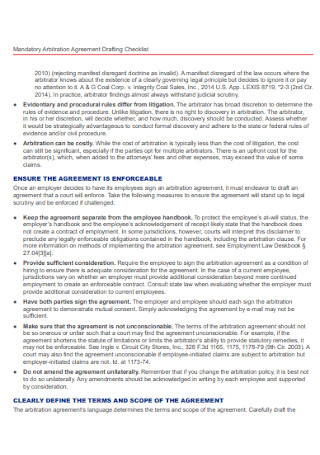
Mandatory Arbitration Agreement
download now -
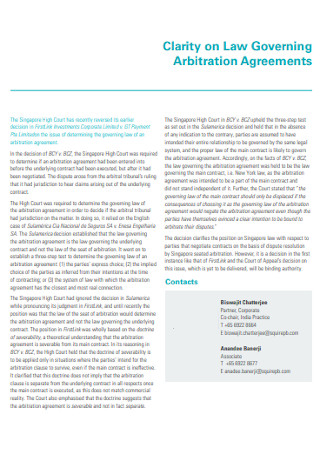
Clarity on Law Arbitration Agreements
download now -
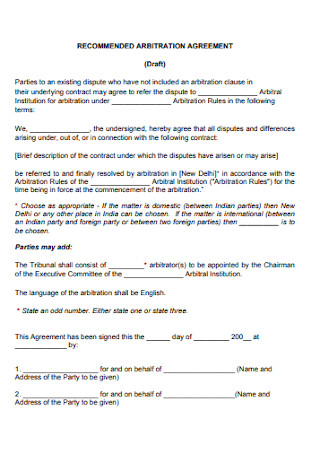
Recomended Arbitration Agreement
download now -
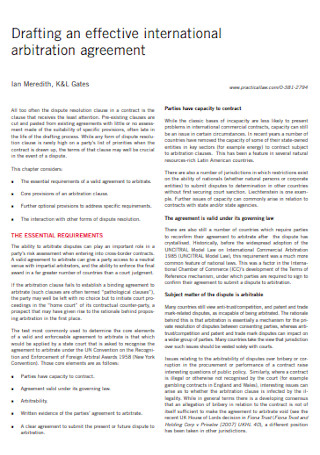
IInternational Arbitration Agreement
download now -
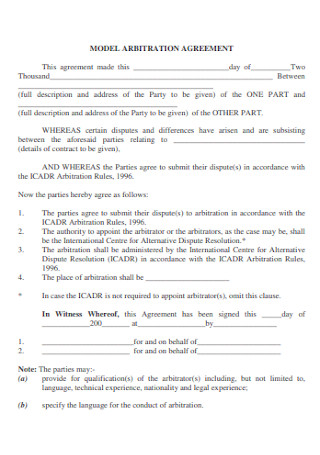
Model Arbitration Agreement
download now -
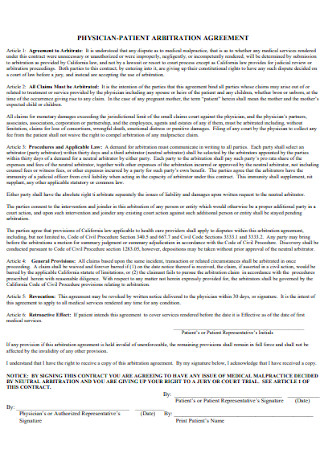
Physician-Patient Arbitration Agreement
download now -
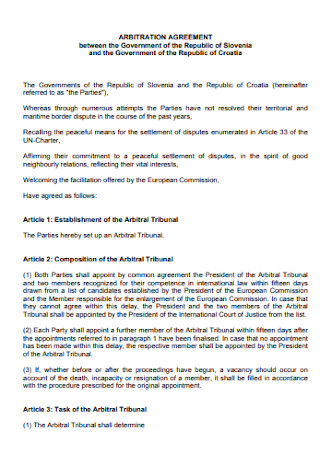
Sample Arbitration Agreement Template
download now -
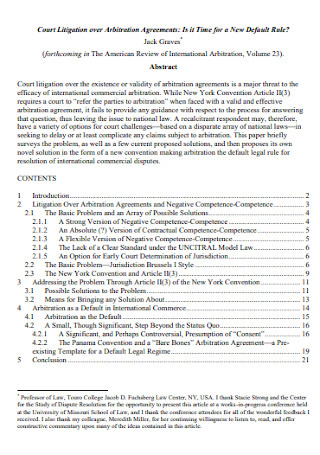
Court Litigation Arbitration Agreements
download now -
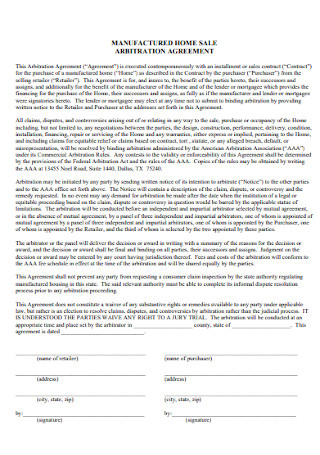
Home Sale Arbitration Agreement
download now -
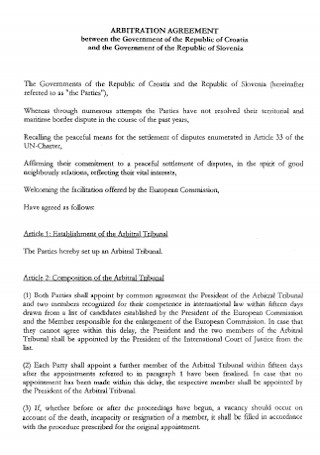
Simple Arbitration Agreement Template
download now -

Arbitration Agreement for Claims
download now -
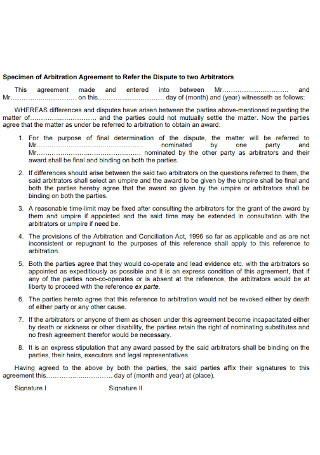
Specimen of Arbitration Agreement
download now -
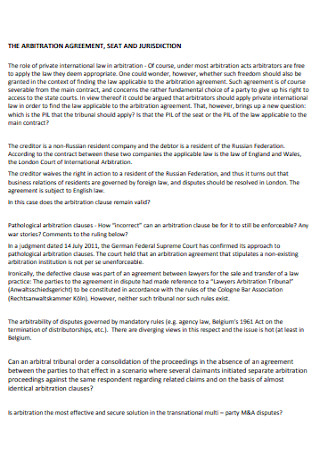
Standard Arbitration Agreement Template
download now -
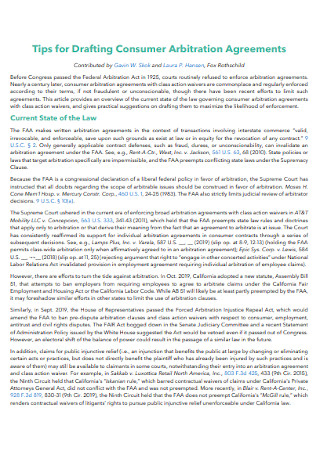
Consumer Arbitration Agreements
download now -
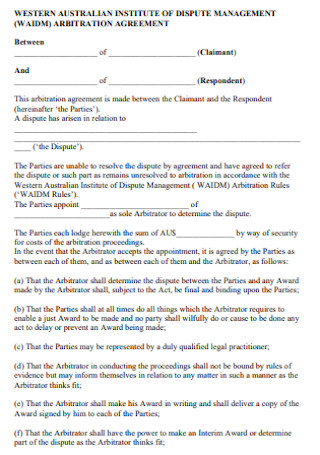
Institute Management Arbitration Agreement
download now -
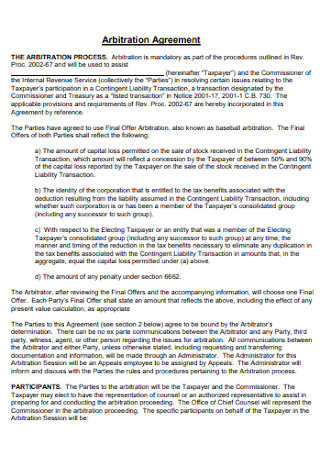
Formal Arbitration Agreement Template
download now -
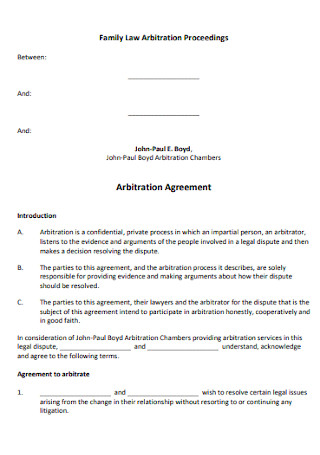
Family Law Arbitration Agreement
download now -
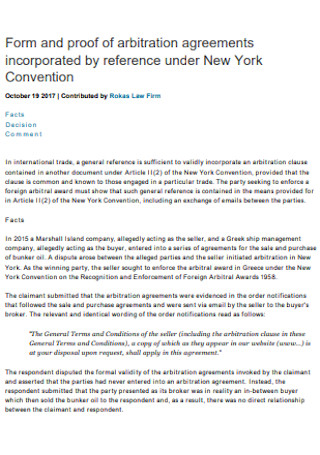
Proof of Arbitration Agreements
download now -

Court Enforcement Arbitration Agreement
download now -
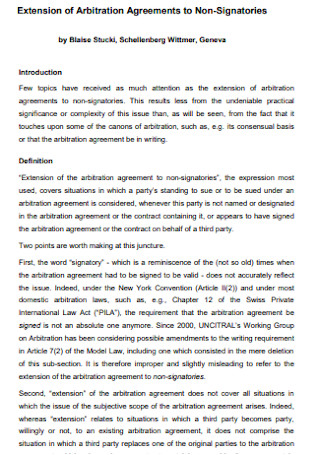
Arbitration Agreements to Non-Signatories
download now -
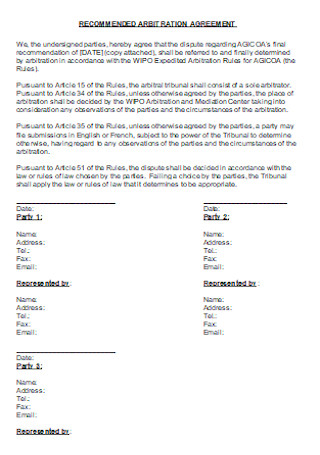
Sample Recomended Arbitration Agreement
download now
FREE Arbitration Agreement s to Download
20+ Sample Arbitration Agreements
Arbitration Agreement: What Is It?
What Are the Perks of Arbitration Agreements?
How to Write an Arbitration Agreement
FAQs
What is ADR?
How common is an arbitration agreement?
What are the important elements of an arbitration agreement?
Is arbitration binding or non-binding?
Arbitration Agreement: What Is It?
In definition, arbitration is a formal dispute or private resolution system where one, two, or more people, aka arbitrators, settle a final decision. And that last decision takes place only when there are enough evidence and arguments shared. Meanwhile, the arbitration contract or agreement invites a neutral third party to create a binding decision among the parties. Hence, heading from the pillar to post for justice is unnecessary.
According to the National Employment Lawyers Association, nearly 27% of American employers mandated their employees (up to 36 million individuals) to sign an arbitration agreement in 2010.
What Are the Perks of Arbitration Agreements?
You might be wondering, “Why should I process an arbitration agreement?” Although there are many reasons behind why you would benefit from it, consider recognizing the most important perks when you consider arbitration agreements. And the most notable examples are:
How to Write an Arbitration Agreement
A mutual agreement is very important. But when a dispute exists, the call for arbitration may rise. And it is very important to consider putting the arbitration agreement into writing to settle terms properly and legally. So how do you do that? Simply follow these steps:
Step 1: State the Intention
A piece of a document can be regarded as any other document without a clear intention on what it is for. So with the words ‘arbitration agreement,’ the purpose is clear that the document is for the intention of arbitration. Also, include each party’s intention specifically so the gist is given shortly on the need to settle a dispute.
Step 2: Identify the Parties
Who are the parties involved? Mention their names and positions accordingly. Most importantly, state the details of the neutral third parties or arbitrators since they are crucial to this whole agreement. Without any crucial contact or identification info, it would be difficult to determine who is who, hence, making the agreement less effective.
Step 3: Incorporate the Terms, Conditions, and Clauses
Take notice of the meat of any agreement or contract, and these are the terms, conditions, and clauses. The legal terms and regulations complete a solid agreement so nobody would question the parties’ rights, rules to observe, considerations, and so much more. But, the challenge lies in ensuring the written information is detailed enough but also understandable.
Step 4: Affix Signatures
All parties of the arbitration agreement should sign the document. The affixed signatures confirm that everything written in the agreement was read, understood, and accepted by the parties involved. And as everyone signed already, submitting the agreement gets accepted easily.
FAQs
What is ADR?
ADR refers to alternative dispute resolution. And ever since arbitration has been governed by the Arbitration and Conciliation Act of 1996, arbitration is one form or epitome of ADR.
How common is an arbitration agreement?
Arbitration is ubiquitous that you might have signed it in simply issuing a credit card for a new smartphone and even in the general employment agreement. In 2010, for example, around 27% of American employers mandated their employees (reaching 36 million individuals) in signing an arbitration agreement.
What are the important elements of an arbitration agreement?
What an arbitration agreement contains depends on the dispute, the parties’ intention, and the agreement itself. But generally, standard arbitration agreements have the following elements:
- Seat of arbitration
- Type of arbitration
- The process of appointing arbitrators
- Arbitration language
- Qualifications and number of arbitrators
- Name and address of the arbitration group
- Governing law
Is arbitration binding or non-binding?
The arbitration procedure can either be a non-binding or binding agreement. But, a non-binding arbitration’s decision is only finalized if parties accept it. Meanwhile, a binding arbitration’s final decision could be enforced by the court and would be appealed on narrow grounds.
While mediation is also a popular alternative for arbitration, don’t forget that they are extremely different. Yes, the two options use third parties but a mediator can’t make decisions for the dispute; only the arbitrator can. So make sure you authorize the right arbitrator to settle disputes and start writing the agreement using sample arbitration agreements. With just a few clicks and tweaks, settlement gets sooner than expected. Download now!
